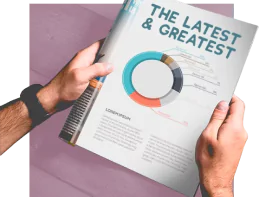The Rise of Artificial Intelligence
The Software Development UK team are excited about artificial intelligence and how this technology is changing the world of business. For many years, AI has become progressively more adept at performing technical tasks like image recognition and predictions. Today, AI performs these tasks much faster and more accurately than humans. However, art is one of the final frontiers that AI has found very problematic, because it requires human traits such as inspiration, visual interpretation, aesthetic taste and creativity.
The engineers at OpenAI are working on DALL-E 2, a computer that uses artificial intelligence to design graphics. The OpenAI team hope that this tool could help them surpass human creativity. DALL-E comprises of two OpenAI technologies; GPT-3 and CLIP. GPT-3 is a powerful engine that has the ability to understand human text and respond meaningfully. CLIP is an advanced computer vision system that understands imagery and can describe the contents. In essence DALL-E has reversed the CLIP process by having GPT-3 supply a description of an image, then CLIP interprets the text and creates a visual image. The results are truly amazing!
An example of DALL-E 2 in action:

Created by DALL-E 2 when a human asked, “teddy bears mixing sparkling chemicals as mad scientists in a steampunk style”.
The above image is a unique piece of art that has been 100% generated by the DALL-E 2 engine. It is very impressive considering when you look at the detail, e.g. the artistic style, understanding of reflections etc. Furthermore, you can ask DALL-E to draw an image using any artistic theme you desire (e.g. water painting, oil painting, etc).
Explaining the depths of how DALL-E 2 works is beyond the scope of this article, but if interested you should watch this ColdFusion episode which provides an excellent introduction to the technology with several examples.
What is the Role of AI in the Future of Creativity and Graphic Design?
There are many tools available to graphic designers, some of which include adopting AI to accelerate productivity. For example, Adobe Photoshop now offers several AI-powered algorithms to aid graphic designers with the process of image processing (e.g. removing glare, noise, etc) and image manipulation (e.g. changing a background, etc). These AI-powered features save a lot of time, but they do not create original content.
DALL-E 2 with its unique ability to create stunning designs should become a powerful tool for any graphic designer. In effect, a graphic designer can capture the vision and requirements from the customer, then proceed to use DALL-E to rapidly create conceptual art for the client. This workflow will enable graphic designers to respond to client’s much quicker than traditional approaches.
Although DALL-E 2 provides amazing images, it is envisaged that it will be difficult to instruct the AI to produce graphics that “exactly” meet customer requirements. The reason for this is that the GPT-3 interpretation of the graphic designer’s artistic description may not perfectly align with what is desired. The solution to this problem is that graphic designers will request the AI to produce background/foreground elements in isolation, then use a tool such as Adobe Photoshop to blend all the elements together.
Ultimately, graphic designers will become adept at instructing DALL-E, then merging the results to create the finished article.
What can we expect next from Dall-e?
Cons:
Due to the ease of use and realism of DALL-E 2 a rising concern is that of deep-fakes. A deep fake is the ability for AI to fabricate videos and photos by convincingly changing the face on a photo to be someone else (e.g. you could create a video that shows someone famous performing a criminal act, etc). The concern is DALL-E 2 amplifies this problem due to the ease of use and visual fidelity of the results produced. To combat the problem, the OpenAI team are adding safeguards to prevent this type of misuse. Only then can it be released to the public.
Pros:
DALL-E 2 is just the second iteration of the software from OpenAI and it is expected that the technology will only get better. Future iterations of DALL-E 2 will see enhanced interpretation of the textual guidance provided by humans. Currently DALL-E produces static images, but in the future it is expected that full video production will be possible. It will be truly amazing to see where this technology takes us.
Final Thoughts:
Artificial intelligence has come a long way over the past few years and it is becoming a larger part of our world. AI-powered applications have shown that they are capable of making design decisions autonomously and intelligently. This should be a technology that graphic designers should be excited for, not fear.
Frequently Asked Questions
A project milestone plays an invaluable role in project planning and development as they give all team members a clear indication of how a project is developing.
An effective software project milestone should serve as a marker-point within the project’s life-cycle and growth. When milestones are met, it is clear for everyone on the team that things are progressing as they should.
If a milestone is not met, it gives management and stakeholders a clear understanding of where the challenges lie in a project and how to overcome them.
Project management milestones help keep work on-track, as they highlight key dates and events in which project development must match expectations. Some project management milestone examples could include:
■ Crucial management or stakeholders meetings
■ Key deliverable dates
■ Beginning and endpoints for each phase of a project
■ Stakeholder approval dates
While software development may ‘survive’ without milestones, it is always advised to keep everyone focused on the same goals.
Without clearly defined milestones to summarise the development of a project, it runs the risk of scope-creep, resulting in setbacks, delays, and even failure.
The number of milestones that any one project have should largely depend on size and project scope.
Smaller-scale projects often have fewer milestones than larger, more complex ones.
When working out milestones, you shouldn’t think in terms of numbers but rather in project progress and development. The most effective and motivating milestones are those which fit naturally within the project’s life-cycle.

